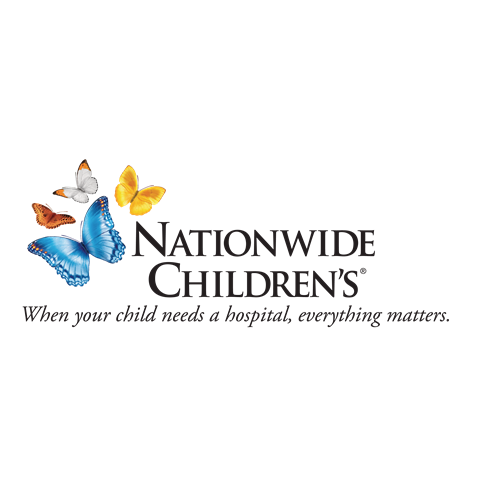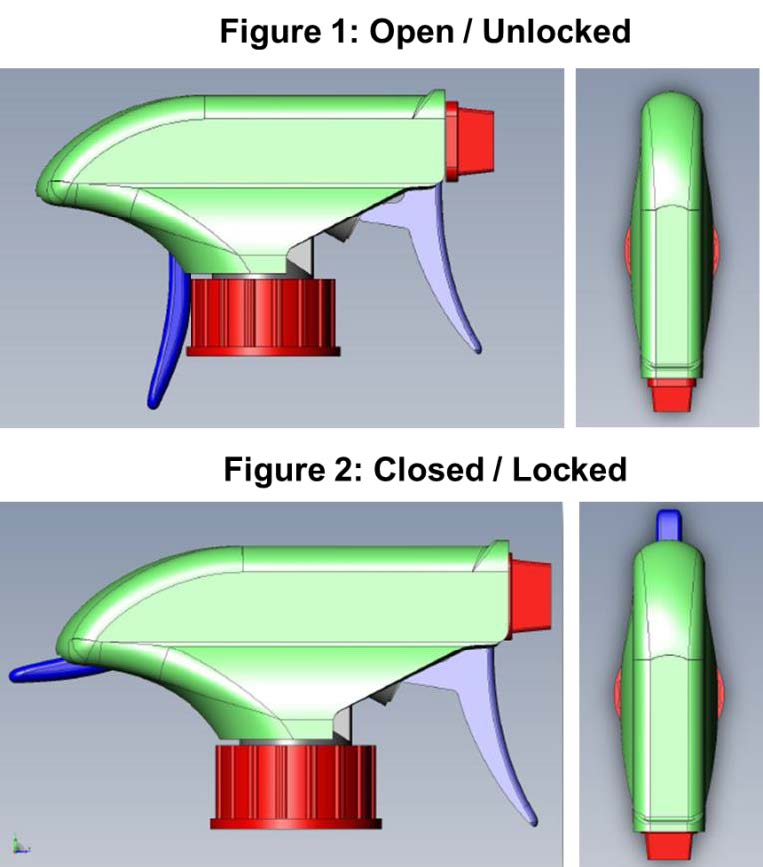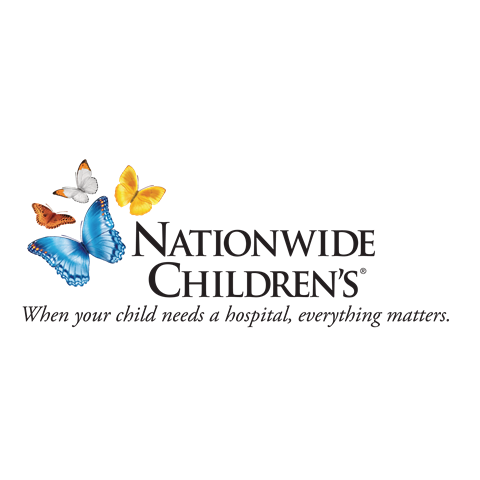Available Technologies
# of Displayed Technologies: 10 / 15
Applied Category Filter (Click To Remove): End User Innovation
Categories
 Sweat Technology for Monitoring Cystic Fibrosis Health and Adherence
Sweat Technology for Monitoring Cystic Fibrosis Health and Adherence
TS-001225 — Cystic fibrosis is an inherited disorder that affects cells that produce sweat and mucus, causing significant damage to the digestive system, lungs, and other organs. A team at Nationwide Children's Hospital has developed a non-invasive monitoring system to track and test a patient with this disease. This technology is a skin patch that measures the metabolomics of the patients sweat to evaluate the clinical health of patients afflicted with cystic fibrosis.
- College:
- Inventors: Hayes, Don; Kopp, Benjamin; Woodley, Frederick
- Licensing Officer: Murrah, Kyle
 Child-Restraint Spray-Bottle for Household Cleaning Products
Child-Restraint Spray-Bottle for Household Cleaning Products
TS-001037 — When it comes to the safety of our children, innovation never stops. There have been many improvements to the safety of devices and receptacles that can be toxic or life threatening if consumed or exposed to skin. A team of researchers at Nationwide Children’s Hospital have incorporated this desire for security into a common household product: the spray bottle. Often filled with harmful chemicals, spray bottles remain one of the leading causes of chemical exposure injuries in children. The team at NCH has developed a “two-step authentication” spray nozzle that requires the dexterity beyond that of a small child. This dual trigger approach requires a full grip that prevents kids from accessing the contents of the spray bottle, while remaining easily usable by adults and seniors.
Benefits and Applications:
Inventors anticipate that incorporating this product into households will result in a decline in child injury due to accidental activation of spray bottles.
Stage of Development:
- College:
- Inventors: McKenzie, Lara; Nelson, Nicolas; Roberts, Kristin
- Licensing Officer: Murrah, Kyle
 A Virtual Reality Simulation to Aid in Exposure to Therapy for School Avoidance
A Virtual Reality Simulation to Aid in Exposure to Therapy for School Avoidance
TS-001036 — School can be a daunting experience. Constant motion, public speaking and a new environment can increase anxiety in children, sometimes leading to school avoidance. A team at Nationwide Children’s Hospital has developed a solution, where exposure therapy procedures are combined with modern technology can improve the school experience for people of all ages. Using a Virtual Reality (VR) Simulation, clinicians are able to use the multi-user capability to interact with and guide their patient through new environments such as classrooms, hallways and lunchrooms, as well as scenarios known to trigger increased anxiety such as public speaking or asking for help. Biofeedback components help collect data so that the clinician can adapt the experience to the user. Although targeted for school-aged children, this technology can be modified to treat any person with school or public phobia.
- College:
- Inventors: Huang, Yungui; DeForte, Shelly; Luna, John "John"; Mackner, Laura ; Vickery, Elizabeth
- Licensing Officer: Murrah, Kyle
.png) Virtual Reality-Based Pediatric Traumatic Brain Injury Assessment and Rehabilitation Platforms
Virtual Reality-Based Pediatric Traumatic Brain Injury Assessment and Rehabilitation Platforms
TS-000621 — Traumatic brain injury (TBI) is a leading cause of acquired disability in U.S. children and adolescents. Impairment of executive functions post-TBI has broad and profound implications for everyday life of pediatric patients, and the development of effective rehabilitation strategies is of significant clinical importance. Researchers at Nationwide Children’s Hospital have developed virtual reality (VR)-based programs for assessing cognitive function and providing subsequent rehabilitation. This pediatric TBI assessment software provides VR-based cognitive-assessment tasks and an additional training platform that pairs with the Oculus Rift virtual reality viewer. The training program is designed with a series of environmentally-enriched three-dimensional cognitive exercises that aid in rehabilitation of executive core functions among pediatric patients with TBI in a highly controlled, safe, and automated manner.
- College:
- Inventors: Xiang, Henry; Patterson, Jeremy; Shen, Jiabin
- Licensing Officer: Murrah, Kyle
 Stuttering Treatment Monitoring App
Stuttering Treatment Monitoring App
TS-000540 — A team led by Dr. Christopher Bartlett at Nationwide Children’s Hospital has developed an app to connect patients with a personalized plan created by speech therapists to aid those with a stutter. This app combines audio-visual components with text to explain an exercise, which is then recorded as the client performs it. The team expanded on this concept to include a deep neural network to provide immediate feedback, as well as the option to connect and share results on social media and with their therapist. The care provider will be able to add exercises as their patient progresses. Once an exercise is mastered, the exercise is opened permanently to the client.
- College:
- Inventors: Bartlett, Christopher; Bambach, Sven; Huang, Yungui; Oiler, Brannon
- Licensing Officer: Corris, Andrew
 All in One IV pole: Tape dispenser, sharps bins and medical trash containers
All in One IV pole: Tape dispenser, sharps bins and medical trash containers
TS-000435 — Inventors at Nationwide Children’s Hospital have developed a device consisting of an intravenous pole (IV) that harbors a clamp for adhesive tape dispenser, sharp bins and medical trash container. This prototype “all in one” equipment is a convenient and practical site for adhesive tape dispensation and surgical trash disposal while ensuring patient safety in the operating suite.
- College:
- Inventors: Hudson, Rick; Kelley, Adam
- Licensing Officer: Eidahl, Jocelyn
.png) "Facing Takeoff" - A Day-Long Workshop for Those Interested in Easing their Fear of Flying
"Facing Takeoff" - A Day-Long Workshop for Those Interested in Easing their Fear of Flying
TS-000433 — Flying phobia is a highly prevalent anxiety disorder, which causes sufferers significant distress and life interference. There are multiple interventions addressing flying anxiety provided through airports, commercial airlines as well as online materials. However, these services either charge fees or do not provide any aircraft/airport simulation experience. Inventors at Nationwide Children’s Hospital have designed a unique workshop curriculum which includes PowerPoint slides, a video tape and participant handouts and experimental activities. This educational intervention facilitates increasing tolerance of and comfort with air travel.
- College:
- Inventors: Bloomster, Brent
- Licensing Officer: Corris, Andrew
 Transcranial Doppler Ultrasound Determination of Pathologic Mechanisms and Treatment Strategies for Cerebral Malaria
Transcranial Doppler Ultrasound Determination of Pathologic Mechanisms and Treatment Strategies for Cerebral Malaria
TS-000338 — Worldwide, malaria affects 2 million individuals annually. Cerebral malaria is the most severe neurological manifestation of malaria with case fatality rates ranging from 15-40%. Researchers at Nationwide Children’s Hospital have developed a method for using Transcranial Doppler to detect distinct waveform morphologies and identify pathogenic mechanisms leading to neuronal injury in children with cerebral malaria.
Benefits:
By identifying the specific sub-type of cerebral malaria, clinicians will be able to treat patients for their particular pathology, improving therapeutic outcomes.
Stage of Development
Following proof of concept studies, the researchers evaluated its use clinically in over 180 children with cerebral malaria and 140 control patients. The published study validated the use of transcranial Doppler ultrasound (TCD) in identifying distinct patient phenotypes which can serve as a guide for appropriate therapeutic regimens to specifically target the pathologic sub-type of cerebral malaria.
Potential Applications/Markets:
TCD can be used to identify pathogenic mechanisms leading to neuronal injury in children with cerebral malaria. We found 5 distinct waveform morphologies that are related to 5 different pathogenic mechanisms in children with malaria. To date, all clinical trials aimed at improving neurologic outcomes of these children have failed. We believe they have failed because drugs are not targeting the correct pathogenic mechanism in each child. In the future, TCD will be able to be used to determine which pathologic category individual children fall in and determine appropriate treatment strategies for them (clinical use). Additionally, this information is imperative to all future therapeutic trials looking at adjunctive agents aimed at the reduction of neurologic injury in these children research tool, probably before the clinical use).
Opportunity/Seeking:
Commercial Partner
Licensing
- College:
- Inventors: O'Brien, Nicole
- Licensing Officer: Murrah, Kyle
.png) Computerized Screening Tool for Behavioral Health (Version 2)
Computerized Screening Tool for Behavioral Health (Version 2)
TS-000303 — Despite the high prevalence of mental health, many cases go without treatment- in part because their disorders go undiagnosed. Scientists at Nationwide Children’s Hospital have developed a computerized screening tool for behavioral health that is able to administer and score a set of mental health symptom questionnaires. This web application enables earlier identification of mental health disorders leading to earlier care.
This is an improvement to the software platform for completing behavioral health screenings (questionnaires that assess symptoms of and impairment due to mental health problems). The "second generation" system is currently built to work from the NCH Enterprise Data Warehouse.
- College:
- Inventors: Krishna, Rajeev
- Licensing Officer: Corris, Andrew
.png) pNLRep2-Cap5kan
pNLRep2-Cap5kan
TS-000289 — Gene therapy experts at Nationwide Children’s Hospital have made significant advancements in designing optimal viral vectors for producing Good Manufacturing Practice (GMP)-grade viral vector products. Our experts have optimized properties of vectors for a wide variety of Adeno-associated virus (AAV) serotypes, including AAV1, 2, 2.5, 3, 5, 6, 8, 9 and rh74. In particular, our experts have optimized virus packaging efficiency, reduced potential to form replication competent AAV and replaced the beta-lactam resistant gene with kanamycin in order to be compliant with European Union (EU) regulations. Our experts have made additional optimized vectors for AAVrh74, and AAV9 that allow for more efficient purification and improved CNS transduction, respectively.
- College:
- Inventors: Loiler, Scott
- Licensing Officer: Corris, Andrew
